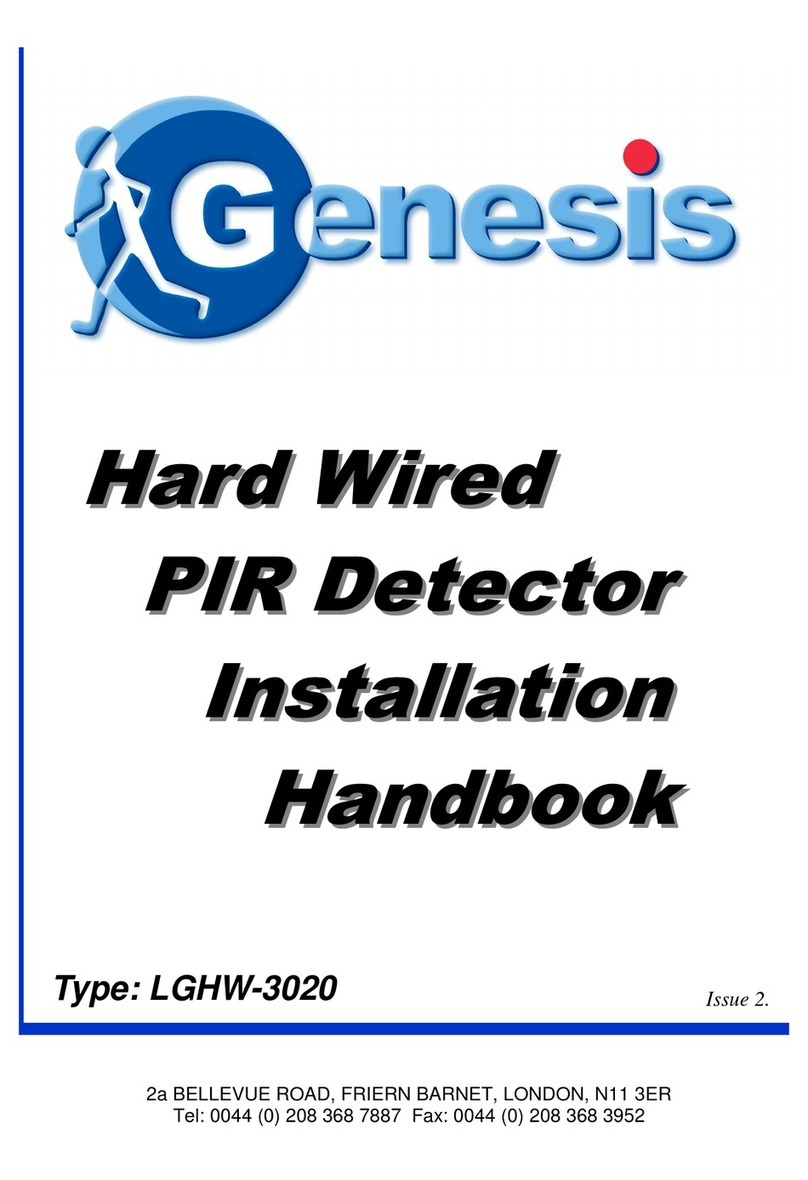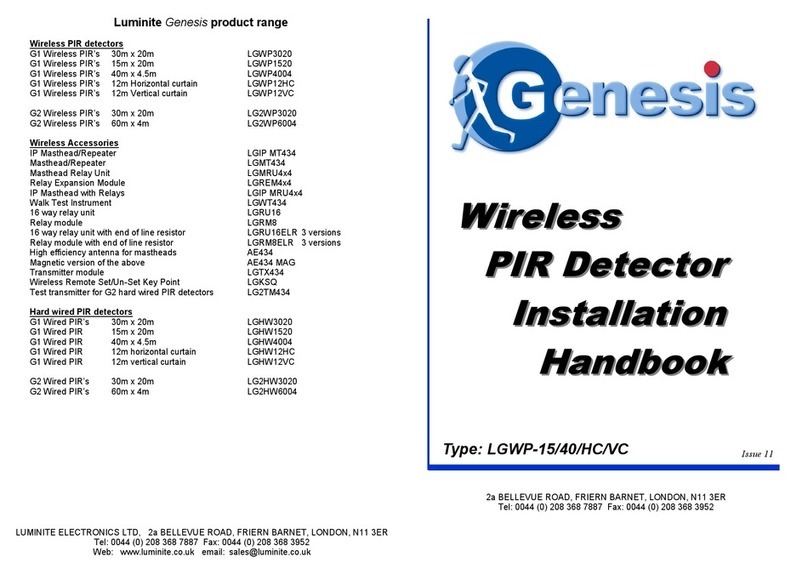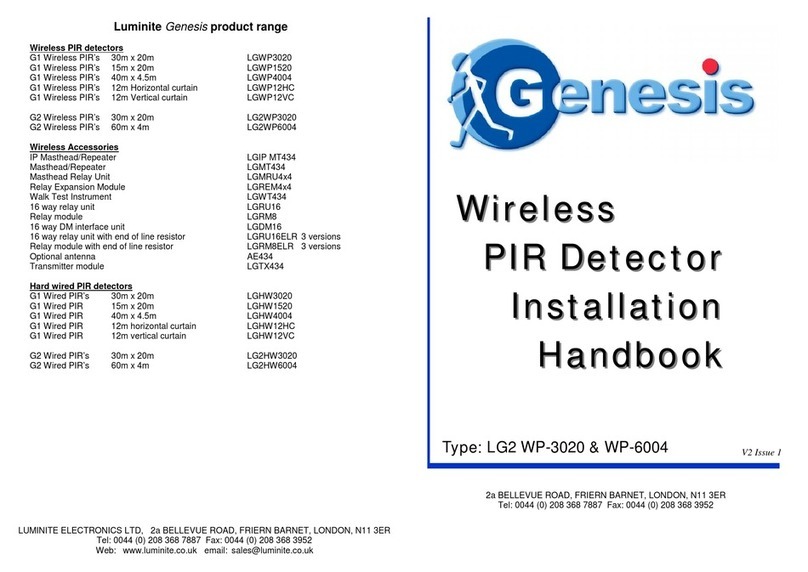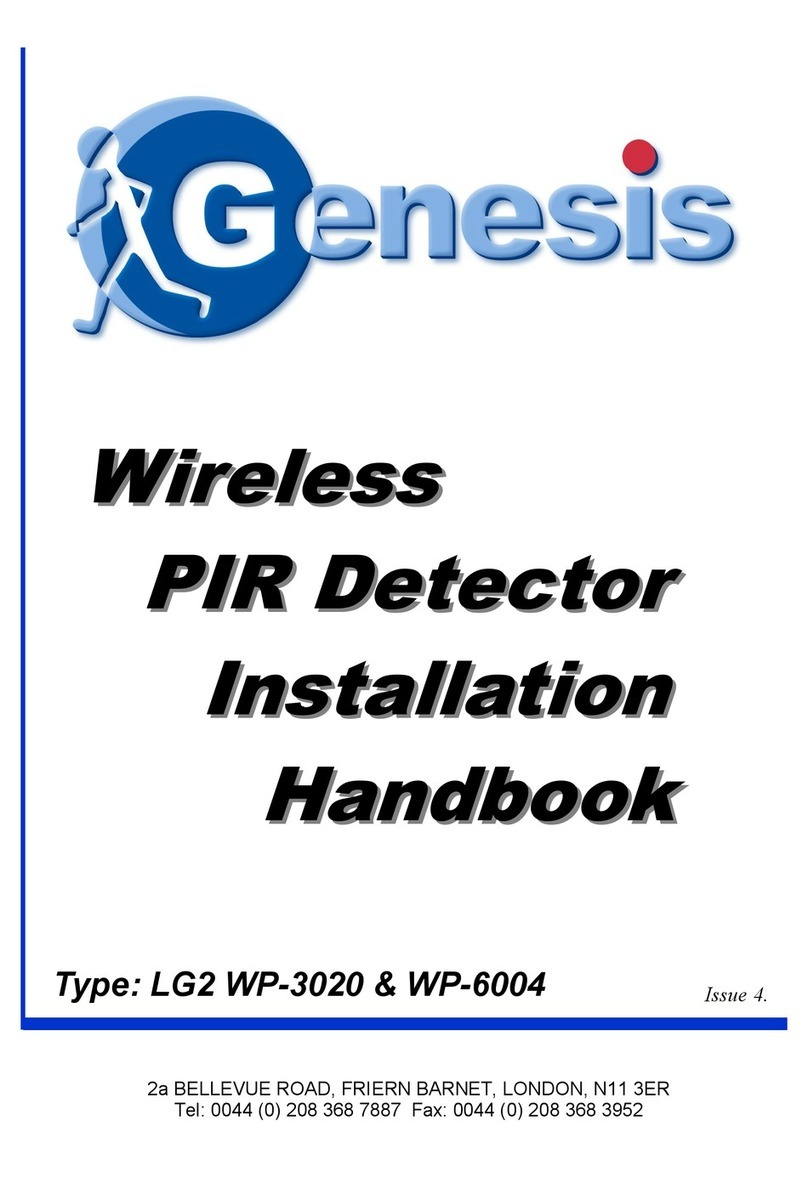
63-601 Genesis Models ED1 & ED2 Multiphase Detector
Read this Manual Before Installing
This manual provides information on the Genesis dete -
tor. It is important that all instru tions are read arefully
and followed in sequen e.
Conventions Used in this Manual
Certain onventions are used in this manual to onvey
spe ifi types of information. General te hni al material,
support data, and safety information are presented in
narrative form. The following styles are used for notes,
autions, and warnings.
NOTES
Notes ontain information that augments or larifies an
operating step. Notes do not normally ontain a tions.
They follow the pro edural steps to whi h they refer.
Cautions
Cautions alert the te hni ian to spe ial onditions that
ould injure personnel, damage equipment, or redu e
a omponent’s me hani al integrity. Cautions are also
used to alert the te hni ian to unsafe pra ti es or the
need for spe ial prote tive equipment or spe ifi
materials. In this manual, a aution box indi ates a
potentially hazardous situation whi h, if not avoided,
may result in minor or moderate injury.
WARNINGS
Warnings identify potentially dangerous situations or
serious hazards. In this manual, a warning indi ates an
imminently hazardous situation whi h, if not avoided,
ould result in serious injury or death.
Safety Messages
The Genesis system is designed for use in Category II,
Pollution Degree 2 installations. Follow all standard
industry pro edures for servi ing ele tri al and omputer
equipment when working with or around high voltage.
Always shut off the power supply before tou hing any
omponents. Although high voltage is not present in this
system, it may be present in other systems.
Ele tri al omponents are sensitive to ele trostati dis harge.
To prevent equipment damage, observe safety pro edures
when working with ele trostati sensitive omponents.
This devi e omplies with Part 15 of the FCC rules.
Operation is subje t to the following two onditions:
(1) This devi e may not ause harmful interferen e, and
(2) This devi e must a ept any interferen e re eived,
in luding interferen e that may ause undesired operation.
WARNING! Explosion hazard. Do not onne t or dis-
onne t designs rated Explosion proof or Non-in endive
unless power has been swit hed off and/or the area is
known to be non-hazardous.
Low Voltage Directive
For use in Installations Category II, Pollution Degree 2.
If equipment is used in a manner not spe ified by the
manufa turer, prote tion provided by equipment may be
impaired.
Warranty
All Magnetrol ele troni level and flow ontrols are war-
ranted free of defe ts in materials or workmanship for
eighteen months from the date of original fa tory ship-
ment. If returned within the warranty period; and, upon
fa tory inspe tion of the ontrol, the ause of the laim is
determined to be overed under the warranty; then,
Magnetrol will repair or repla e the ontrol at no ost to
the pur haser (or owner) other than transportation.
Magnetrol shall not be liable for misappli ation, labor
laims, dire t or onsequential damage or expense arising
from the installation or use of equipment. There are no
other warranties expressed or implied, ex ept spe ial writ-
ten warranties overing some Magnetrol produ ts.
Quality Assurance
The quality assuran e system in pla e at Magnetrol
guarantees the highest level of quality throughout the
ompany. Magnetrol is ommitted to providing full
ustomer satisfa tion both in quality produ ts and
quality servi e.
The Magnetrol quality assuran e system is registered to
ISO 9001 affirming its ommitment to known interna-
tional quality standards providing the strongest assuran e
of produ t/servi e quality available.
Copyright © 2022 AMETEK Magnetrol USA, LLC.
All rights reserved.
Performan e spe ifi ations are effe tive with date of issue
and are subje t to hange without noti e. Magnetrol®
reserves the right to make hanges to the produ t
des ribed in this manual at any time without noti e.
Magnetrol makes no warranty with respe t to the a ura-
y of the information in this manual.































